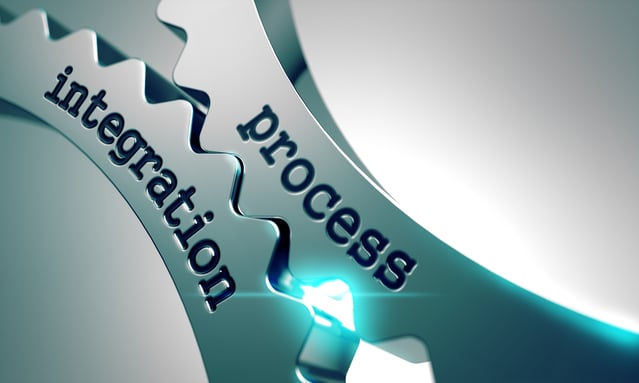
The world is run by data. It’s gathered, analyzed, and used to make critical business decisions in all industries. But how can you ensure that your data is accurate, protected, and consistent? After all, only clean data can provide precise information for your business operations.
That’s where data integrity testing comes in. It’s the industry-wide method used to evaluate your data’s retrievability and accessibility, helping you find any issues and address them before they become larger problems. At QASource, we’ve shared a comprehensive guide about this practice. We’re going to discuss the following topics so you’ll gain insight into the importance of data integrity testing.
- What Is Data Integrity Testing and Why Is It Important?
- Types of Data Integrity Tests
- Common Misconceptions about Data Integrity
- Errors That Cause Harm to Data Integrity
- How Do You Know Your Data Has Integrity?
- Checklist for Maintaining Data Integrity
- How to Ensure Data Integrity in Your Organization?
What Is Data Integrity Testing and Why Is It Important?
As the name implies, data integrity testing is a process that evaluates the integrity of your data. “Integrity” is an umbrella term that refers to the completeness, accuracy, and consistency of information. Data integrity also refers to how data remains compliant with regulatory requirements.
Data integrity testing is the process used to assess if your company data follow these standards. It’s how you can quantitatively measure your data and ensure that it remains traceable, reliable, and retrievable, so you’ll want a solid and comprehensive data integrity testing strategy.
How to Test Data Integrity: Types of Data Integrity Tests
To check the integrity of your database and data, there are several types of tests that can be done. The two main domains that need to be assessed are physical integrity and logical integrity.
-
Physical Integrity
This test evaluates the physical IT infrastructure and hardware that contains your data, especially where it’s stored and retrieved. By knowing vulnerabilities and putting measures to mitigate them, your database will be protected from natural disasters, human errors, storage erosion, accidents, and other threats.
-
Logical Integrity
Testing your data for logical integrity is how you can ensure that your data remains unchanged even if it’s used in different ways and across other databases. There are four subcategories for this domain:
- Entity Integrity: Testing entity integrity is how you can ensure that every entity (people, person, or thing) in your database has a unique key and isn’t listed more than once.
- Referential Integrity: To ensure that data is stored and used uniformly, you’ll need to test your database for its referential integrity. These are the rules that govern how changes, deletions, and additions can be made.
- User-Defined Integrity: This refers to the rules and limitations set by a user to data to fit their needs. These must be tested to check if they follow compliance standards and help in ensuring data integrity.
- Domain Integrity: Testing domain integrity is how you can ensure that data contained in a domain is accurate and follows formatting, type, and amount of data entered.
Common Misconceptions About Data Integrity
There’s a lot of confusion about data integrity testing and data integrity because of its similarity to other processes, such as data security and data quality. Here are the facts:
-
Data Integrity Does Not Concern Data Quality
The processes used to ensure that data meets company standards and needs fall under data quality. This is a measurement of your data’s accuracy, completeness, reliability, age, and relevance. On the other hand, data integrity covers all these while also implementing the rules and limitations about how information can be processed, stored, transferred, etc.
-
Data Integrity Is Not About Data Security
Data security is more about protecting information from corruption, theft, and access by unwanted entities, especially from outside the company. Because of this, data security falls under data integrity. All processes used for data security can be classified under data integrity, but not all processes involved in data integrity can be considered under data security.
Errors That Cause Harm to Data Integrity
What are things that can cause issues with your data integrity? There are a lot:
- Human Errors: Manual input is prone to errors. People can duplicate data, delete it accidentally, or fail to follow protocols which leads to vulnerabilities.
- Malware and Viruses: Bugs, spyware, and other malicious software will compromise data integrity. These can modify, read, steal, and delete data for nefarious ends.
- Compromised Hardware: Any issues with servers or computers can affect your data integrity. For example, a crash can cause data deletion, especially if there are no backups. Compromised hardware can also affect how data is processed and may even restrict access to them.
- Errors in Transfers: These occur when you can’t successfully transfer information from one database to another. When this happens, data may be corrupted or lost, which can disrupt your business operations.
How Do You Know Your Data Has Integrity?
There are ways to check if your data has integrity even before testing.
-
Accessibility and Retrievability
Your data must be placed in the correct locations and accessible at the right time. That way, any employee who needs information, statistics, and other details for reports or presentations can easily find them. If they don’t, this could lead to inefficiency and frustration among users.
-
Reliability
You can check if your data is reliable. This means that it should be accurate and complete to help build data trust in your organization. You can be confident that you have the right information to use for critical business decisions.
-
Traceability
Checking the traceability of your data is one way to ensure its integrity. This refers to how you can track data touch points within a landscape, allowing you to trace it back all the way to its source. When you have this information, you’ll know issues, strengths, and deficiencies and address them adequately.
Checklist for Maintaining Data Integrity
Before testing can even begin, you should already be following the best practices for maintaining data integrity. Here are the six steps you can include in your data integrity testing checklist:
-
Validate All Inputs
You’ll want to set up a process where you can validate input and ensure that it’s accurate. This should be applied to all types of data, whether they’re coming from an internal or an external source.
-
Validate All Data
Aside from the input, you’ll want to validate all the existing data in your network. When doing this, you should have set specifications and key attributes that you’ll use as standards when validating your databases, ensuring uniformity and efficiency.
-
Remove All Duplicate Data
Sensitive data could end up in places like documents, spreadsheets, and emails. That’s why it’s the best practice to periodically remove all duplicate data. This is how you can ensure that there’s no stray information that just anyone can access.
-
Ensure Backup for All Data
System crashes and other unseen events can result in data loss. So you have to make sure that your data is backed up often and regularly. This is especially helpful when you’re attacked by ransomware since it won’t have much leverage.
-
Maintain Strict Access Controls
You’ll want to ensure that only employees with the right entitlements can access your data. This is how you can prevent outsiders from finding sensitive data and using it for malicious purposes.
-
Always Maintain an Audit Trail
Having an audit trail helps you check timestamps, touchpoints, and records of every way data is processed. So when an issue emerges, you’ll know how to trace it back to its source and rectify the problem.
How to Ensure Data Integrity in Your Organization
Aside from setting up ways to maintain data integrity, you’ll want to be holistic and ensure that your entire organization operates in accordance with data integrity best practices. Here are some common tactics to create this environment:
-
Establish a Culture of Data Integrity
Everyone in your organization, from the C-suite to rank-and-file employees, should know the best practices for data integrity and apply the knowledge to relevant aspects of their work.
-
Regular Employee Training
You should conduct periodic employee training sessions for gathering, processing, managing, and storing data. This is so they’ll know their roles and responsibilities when it comes to data integrity.
-
Process Data Intelligently
You’ll want to ensure that any pre-processing steps, like data aggregation and normalization, won’t affect data. In addition, checking for duplicates regularly helps free space and removes data breach risks.
-
Implement Strong Security Measures
Encrypting data and implementing access controls can help you protect sensitive company information from hackers and other malicious elements.
Rounding Up: Why Is Data Integrity Important for Your Business, and How Can We Help?
Having reliable, easy-to-access, secure, and consistent data helps your company in three main ways:
- Customer Experience: Companies have to gather customer data in most cases, which can include sensitive information. Data integrity testing is one way to ensure that all this data is secure. By extension, your customers will be confident that their information is protected and processed accurately.
- Business Analytics: Accurate data helps you gain insight into the performance of your business. This is how you can make more informed decisions, perform corrective actions, and leverage your strengths to increase your revenue.
- Compliance: Data integrity testing is one way to ensure that you remain compliant with regulatory standards, especially with how businesses are obligated to retain data for a set period of time.
QASource is a trusted provider of various quality assurance solutions for companies of all sizes.
One of our specializations is data integrity testing. We’ll conduct comprehensive data integrity tests and help you create a robust data integrity testing strategy. For more details, contact us today or check out our pricing.

